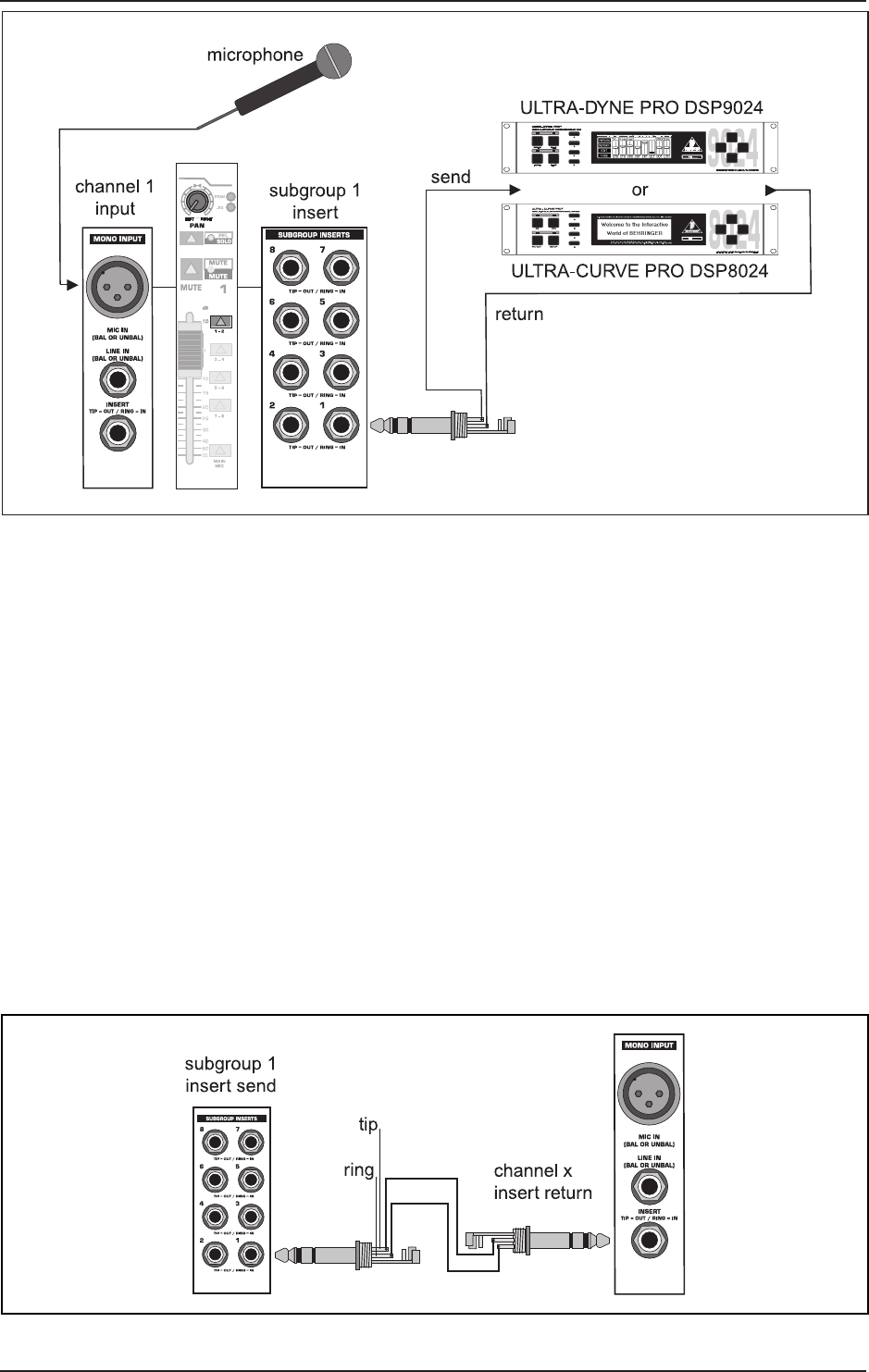
13
EURODESK MX3282A
Fig. 5.2: Inserting an external EQ/dynamics processor post channel EQ
In this arrangement you might find that compression tends to soften the perceived amount of (especially treble)
EQ applied. The solution here is to apply more EQ. This creates a real pressure sound, great for high energy
music such as dance.
In the above example, any aux sends to effects should be applied before the EQ/dynamics processing takes
place. If you want the aux sends to be post-processing, you will need to address the signal to one of the
subgroups and then insert the EQ/dynamics processor between the corresponding subgroup output (insert
send) and a channel input (insert return).
You can now reclaim the channel 2 input as follows: By applying the channels insert send you can route out
an instruments signal being plugged into the line input, treat it with an EQ/dynamics processor, and then
reroute it via a subgroup (insert return) to the master section.
An additional patch enables channel EQ to be placed onto a subgroup with no reduction in the number of line
inputs available, as well as providing an opportunity to lead a signal pre-EQ into a subgroup. By inserting a plug
into the channel insert socket, the channel is interrupted between the gain pot and the EQ. A signal which is
being led into the channels mic- or line input is now guided into the subgroup inserts input. It appears to be
sensible to use this signal path preferably for readily edited signals (e.g. tape tracks or post-EQ DI-outs from
instruments amplifiers), as there is no EQ in the subgroup signal path.
Fig. 5.3: Making use of the channel EQ for shaping subgroup-signal by applying inserts
5. SUBGROUPS AND INSERTS


















